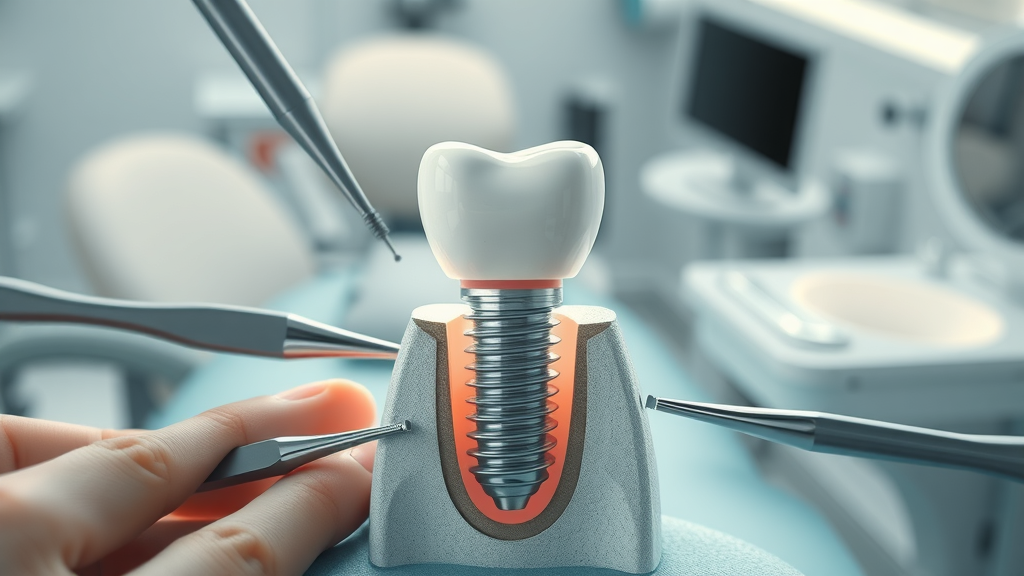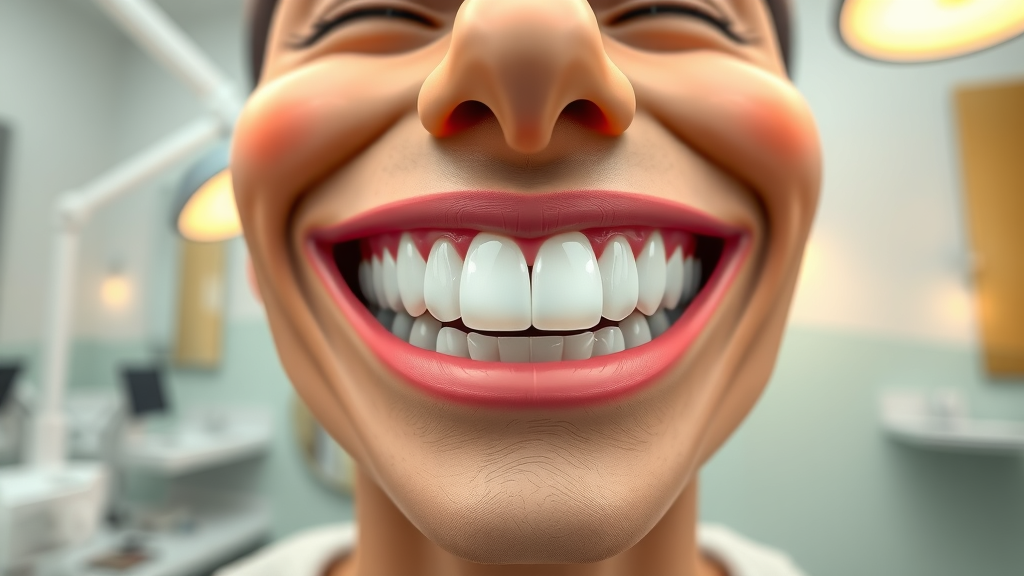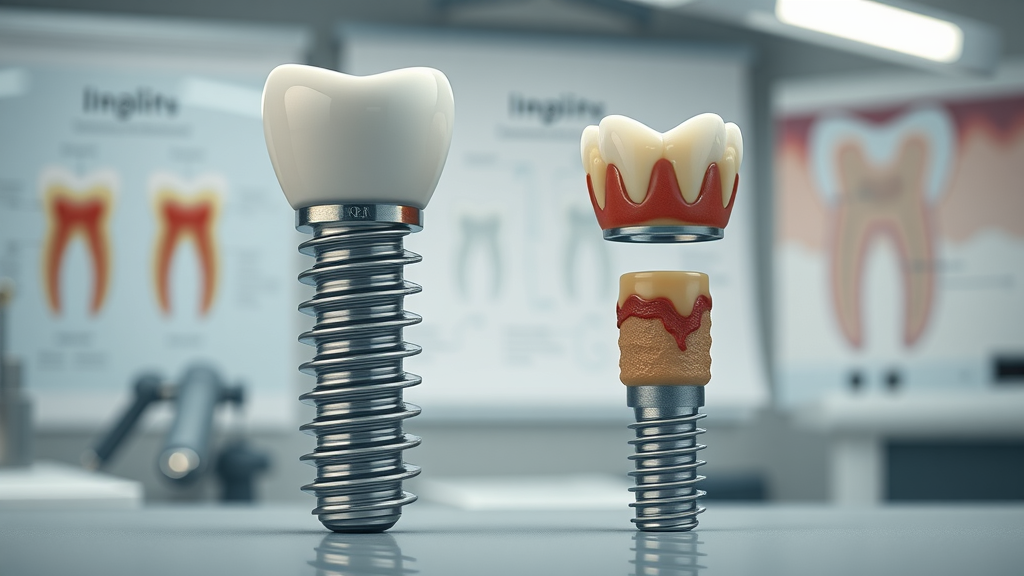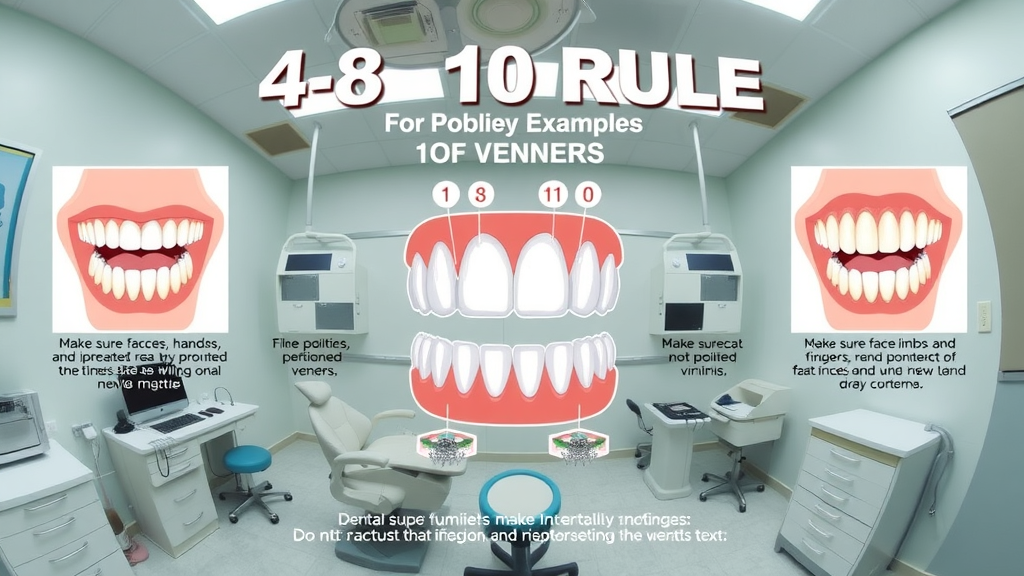Is a perfect smile within reach, or might dental innovation chart a more unique course to oral perfection? Delve deep with us into the nuanced world of veneers versus implants—a battle for dental superiority that touches upon aesthetics, costs, and longevity.
Understanding Dental Veneers and Implants
Diving into the world of dental enhancements can be overwhelming, but understanding the essentials of dental veneers and dental implants will guide you in making an informed choice. Whether you're looking for cosmetic enhancement or a functional restoration, these options cater to different needs and preferences.
What Are Veneers?

Veneers are ultra-thin shells made of porcelain or composite materials, intricately designed to cover the front surface of teeth. Delivered in a dental clinic setting, these custom-made shells offer a rapid cosmetic transformation for issues like discoloration, chips, and slight misalignments. The application of veneers necessitates minimal tooth reduction, preserving the majority of the natural tooth structure.
Typically, porcelain veneers are preferred for their stain-resistant properties and ability to mimic light-reflecting qualities of natural teeth. While composite veneers are less involved, in terms of procedural demands, their aesthetic outcomes are slightly less luminous compared to their porcelain counterparts. This disparity often affects the choice based on the sought degree of enhancement.
Understanding Implants

In contrast, dental implants are designed as a permanent solution for tooth loss, substituting both the tooth root and crown. Anchored into the jawbone, implants act as a robust foundation for replacement teeth. The process involves a surgical insertion, typically requiring more time to integrate compared to veneers. This integration forms a secure bond, mimicking the function of natural teeth.
A critical advantage of implants is their ability to promote bone health, preventing deterioration that often follows tooth loss. Implants not only offer a long-term solution but also harness resilience, making them suitable for individuals seeking a lasting dental investment. For more information on dental implants, visit our Dental Implants Pickerington OH page.
Comparing Veneers vs. Implants
Comparing veneers and implants involves evaluating the intended outcome—cosmetic versus structural—and the client's particular dental concerns. Veneers primarily address surface imperfections, offering transformation in a relatively short timeline, making them more suited for aesthetic purposes. Meanwhile, implants provide a comprehensive replacement solution, ideal for users seeking functionality.
Pros and Cons: Veneers and Implants
While both dental veneers and implants boast significant advantages, certain limitations accompany each option that merit consideration.
Pros and Cons of Dental Implants

The strength and permanence of implants serve as their principal allure. Individuals can anticipate nearly lifelike functionality, with implants lasting several decades with proper management. This durability factor substantially impacts their appeal, particularly for those focused on longevity. However, the invasive nature of the surgery and extended healing period can deter potential candidates.
The higher initial cost can also be a drawback, though many consider this a worthy investment considering the implant's durability. A major con is the necessity for sufficient bone structure to support the implant, which might require additional procedures for some patients. Learn more about the implant process on our Dental Implants Westerville, OH page.
Pros and Cons of Dental Veneers
Among the pros of dental veneers are their swift application and cosmetic appeal, significantly enhancing smiles within weeks. Known for their natural appearance, veneers also offer flexibility to tailor aesthetics without a comprehensive surgical procedure. However, the less durable nature of veneers compared to implants poses a challenge. Despite a veneer’s capability for aesthetic enhancement, their span ranges primarily from 10 to 15 years, necessitating replacements over time.
Additionally, veneers excel in scenarios where teeth are present, providing augmentation versus replacement—a stark contrast to implants, which cater to gaps. Veneers require a small amount of enamel removal, but this change is irreversible, a point to deliberate for those interested in preserving original tooth integrity.
Cost Factor: Are Implants More Expensive Than Veneers?
Discerning whether implants are more expensive than veneers hinges on several factors, including initial costs, potential additional procedures, and long-term investment perspectives.
Financial Investment in Veneers
Initial pricing for veneers varies widely, hinging on material choice, particularly between porcelain and composite options, alongside care and maintenance considerations. While veneers may have a lower upfront cost compared to implants, ongoing costs such as potential replacements should be factored into the financial equation.
Financial Investment in Implants

In comparison, implants tend to reflect a significantly higher initial financial outlay, given the complexity of the implant process . However, they also offer long-term reliability, minimizing the need for frequent replacements seen with veneers, making them economically viable over a more extended period. For more insights, visit our Dental Implants Hartford OH page.
Cost Comparison Overview
Aspect |
Veneers |
Implants |
|---|---|---|
Initial Cost |
Lower |
Higher |
Durability |
Moderate |
High |
Maintenance |
More frequent |
Less frequent |
Aesthetic Impact: Which Looks More Natural?
Achieving a natural appearance is a core goal for many considering these enhancements, and understanding how veneer and implant aesthetics compare is essential.
Natural Appearance of Veneers

The refined nature of porcelain veneers allows for a natural mimicry of tooth enamel, offering individuals an aesthetic boost without compromising authenticity. Their translucency and lustrous finish can provide a seamless look, ensuring that cosmetic treatments remain discreet.
Natural Appearance of Implants
When correctly installed, dental implants boast impressive naturalness by utilizing prosthetic crowns that match the look and feel of neighboring teeth. Over time, as gums reshape around the implant, this solution offers an indistinguishable replacement alongside genuine dental structures.
Longevity and Durability: Do Implants Last Longer Than Veneers?
For those pondering the durability of veneers vs. implants, implants typically last longer than veneers , promising years of reliable service.
Durability Factors of Veneers
Generally, veneers require periodic replacements due to wear over time. Material strengths vary, with porcelain offering superior protection against stains relative to composite options. Routine dental health practices can extend their lifespan, though external pressures, such as acid exposure and impacts, can demand vigilance.
Durability Factors of Implants

Durability lies at the heart of implant design. Solidly embedded into the bone, they resist the prevalent issues of decay that natural teeth face, providing structural resilience. This factor underscores their appeal for individuals seeking a one-time investment for lifelong results.
Dental Health and Maintenance
Understanding the dental health implications and maintenance requirements for each option is critical for long-term success.
Dental Health Considerations
Veneers are often considered less invasive than implants, focusing primarily on the aesthetic surface layer of teeth; however, this can also mean they are more vulnerable to underlying dental issues.
Maintenance of Dental Veneers
Though veneers are designed for resilience, regular maintenance involving proper oral hygiene is critical to prolong their lifespan. Professional assistance from a dental clinic, combined with routine brushing and flossing, helps sustain their visual appeal and integrity.
Maintenance of Dental Implants
Implants necessitate less intensive upkeep, aligning closely with natural dental hygiene practices. Patients can comfortably commence their daily regimen with standard products, though periodic dentist visits guarantee continued implant health.
Procedure and Recovery: What’s Involved?
The procedures and respective recovery timelines for veneers and implants further delineate their suitability for different candidates.
Veneer Application Process
Veneers require a minimally invasive application, frequently completed over multiple appointments. Initial preparation involves a reduction of the tooth, followed by an impression for manufacturing veneers, ultimately culminating in bonding at the final alignment stage.
Implant Surgery Procedure

The implant procedure encompasses several phases, starting with surgical insertion of titanium posts into the jawbone. Afterwards, the bone must heal and integrate with the implant over months, before crowns are attached, completing the look of natural teeth.
Recovery Time and Aftercare
Comparatively, veneers offer a swift recovery, minimal discomfort, and instant results. In contrast, implants require a complex healing process, emphasizing the need for meticulous aftercare to promote successful osseointegration and overall treatment success.
The 4 8 10 Rule for Veneers
Understanding rules and guidelines relevant to veneers strengthens users’ knowledge and decision-making acumen.
Understanding the Rule

The 4 8 10 rule provides a timeline framework regarding veneer maintenance, outlining a general guideline for polishing, potential repairs, and replacements after 4, 8, and 10 years respectively. This approach aids in maintaining optimal visual results and function.
Real-Life Testimonials and Expert Opinions
Glean insights from professionals and patients who have traversed the veneers vs. implants journey, enhancing your dental treatment knowledge.
Quotes from Dental Experts
“Both veneers and implants present unique benefits and challenges. Considerations should be tailored to each patient’s functional needs, aesthetic goals, and overall oral health.” ~ Dr. Steven Morris, Dental Surgeon
Frequently Asked Questions
FAQs About Dental Veneers and Implants
Do implants last longer than veneers?
Yes, implants typically offer greater longevity than veneers, often lasting several decades.
Which looks more natural, veneers or implants?
Both can provide natural appearances, though the personal suitability often hinges on individual dental structures and surrounding teeth.
Are implants more expensive than veneers?
Implants typically entail higher initial costs compared to veneers, but their extended durability may justify this financial outlay in the long term.
What is the 4 8 10 rule for veneers?
This rule guides the care intervals of veneers, suggesting polishing every 4 years, potential repairs at 8, and replacements by the 10-year mark.
Further Questions? Send Us a Message
Still have queries? Feel free to send us a message . Our dental team eagerly awaits the opportunity to address any additional inquiries.
Making the Decision: Veneers or Implants?
Navigating the decision between veneers and implants involves assessing personal dental goals, budget constraints, and desired outcomes.
Summary of Key Takeaways
Evaluate the aesthetic and functional dental goals individually
Consider the durability, maintenance, and cost implications
Consult with a dental professional to explore suitability
Next Steps: Book a Consultation
Reach out to us for a comprehensive dental consultation. We can assess your specific needs and tailor solutions to achieve your desired dental goals.
"It’s not just about teeth—it’s about living without fear, shame, or regret. That life starts when you call 740-967-6046 .”
Johnstown Dental Care
370 West Coshocton St. Johnstown, OH 43031
Phone: (470) 967-6046
Website: www.johnstowndentalcare.com
Proudly Serving: Johnstown, New Albany, Granville, Alexandria, Pataskala, and surrounding areas in Licking County, Franklin County, and Delaware County.
 Add Row
Add Row  Add
Add 



Write A Comment